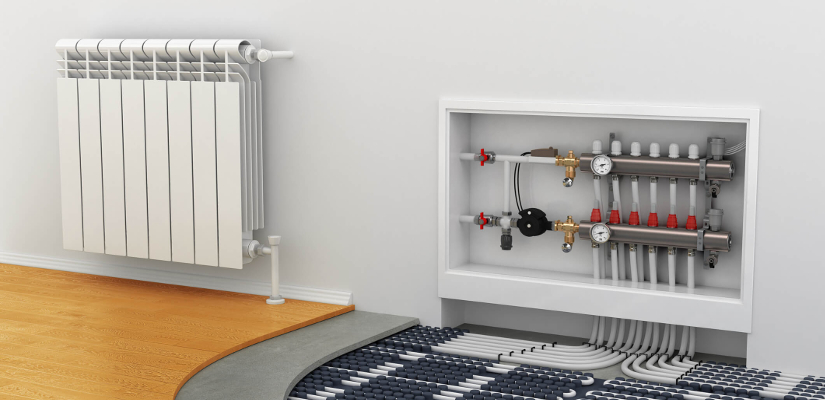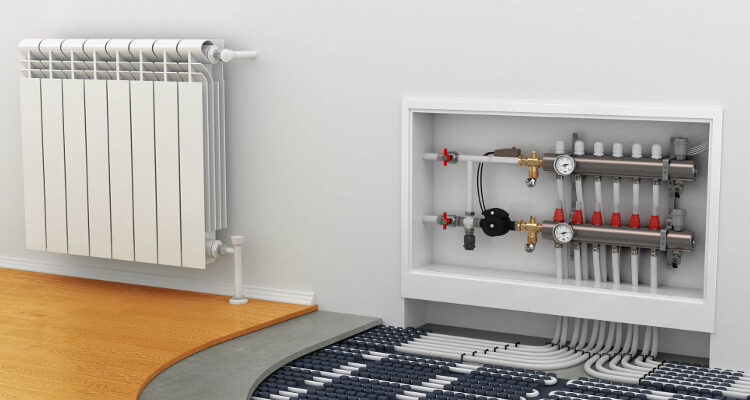THE ULTIMATE GUDIE TO FLOOR HEATING SYSTEMS

When deciding to install a heating system, we might find ourselves spoilt for choice. There are various options you can choose from. Even while deciding, there are so many aspects that need to be kept in mind. Some of them are the cost of installation, cost of use, maintenance and impact on health. If there are members of the family who suffer from allergies, you would want a system that doesn’t spread allergens through the room. Keeping all this in mind, the In floor heat system has become increasingly popular. This type of heating system is installed underneath the flooring. The type of flooring you choose has an impact on the heating system as well. We are here to tell you about the different types of floor heating systems under various flooring materials.
The heating system under the carpet
The floor heating system is installed underneath the flooring. It covers the entire area which allows it to distribute the heat evenly around the room. When the system is installed under the flooring, it begins by heating up the floor. This heat then rises up and begins to warm up the entire room. The system heats up the room efficiently without any cold and hot spots. If planning to have carpet flooring, a foil heater is installed underneath it. The foil heater is super-thin and made out of flat aluminium foil. It is excellent to be used in large and regular-shaped places. As it is super thin, the floor levels don’t increase. It is a great option when planning to renovate. For the system to be effective, the carpet should be about ¼ inches in thickness but not more than 1inch in thickness.
Under the Vinyl Flooring
When planning to install vinyl flooring, the heat provided by the system should not exceed the temperature of 81 degrees. Before installing, the technician will carry out a heat loss calculation. This will help to ensure that sufficient heat is provided by the system. The system to be installed under the flooring is dependent on whether the heating system is being installed in a wet room or a dry room. For a dry room like living room, bedroom or hallway, an insulated underlay. However, if you decide to install insulate underlay in a wet room because it could expand due to excess moisture. For installation in a wet bathroom, you can opt for sticky mats and loose wire systems.
Under Tile and Stone Floors
Tile and stone floors are a popular choice as this type of flooring is durable and easier to clean. This type of flooring is commonly in bathrooms, kitchens, corridors and laundry areas. It can take heat which is up to the temperature of 84 degrees. The heating system can provide output going up to 20 W/ft2. You can opt for either electric or hydronic underfloor heating systems. The electric heating mats are a highly preferable choice. These mats have been designed in such a manner that they can be easily installed in rooms that irregular shaped room and floors with various fixtures.


Comments are closed.